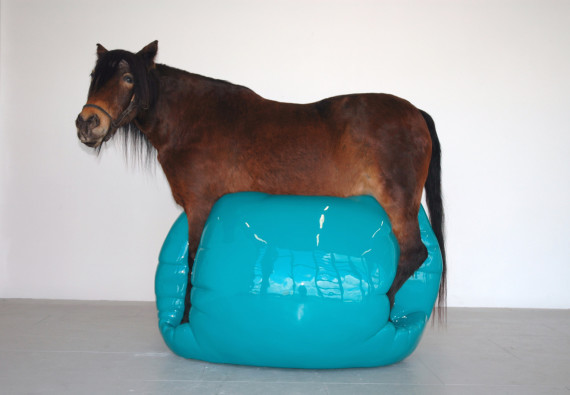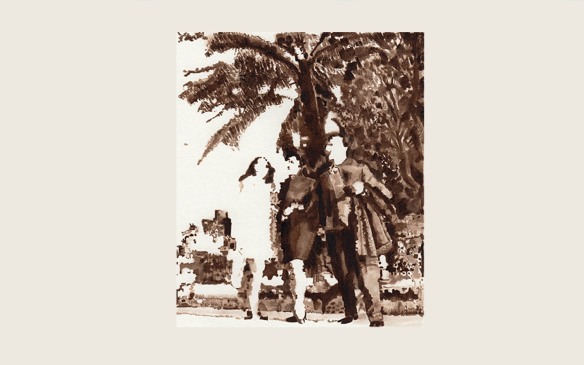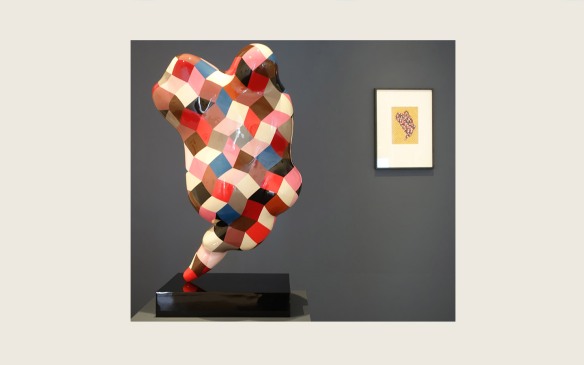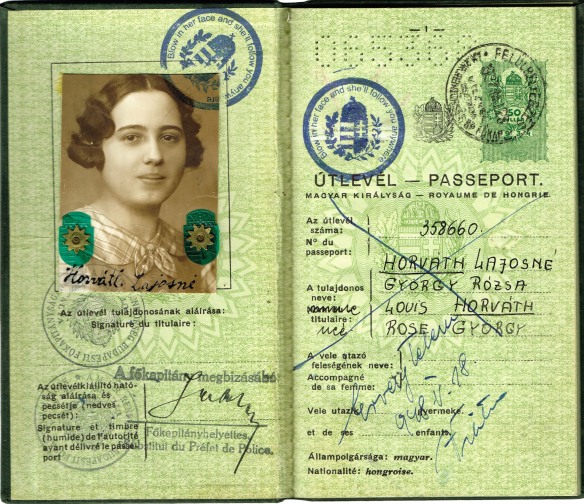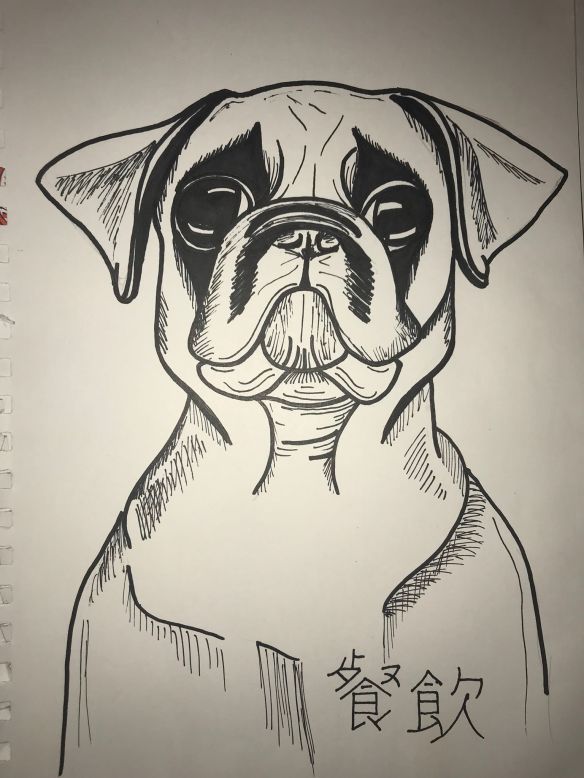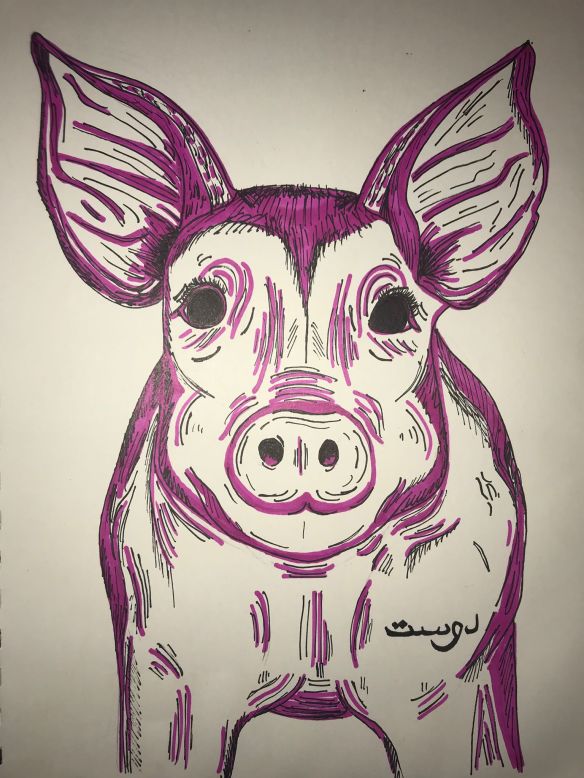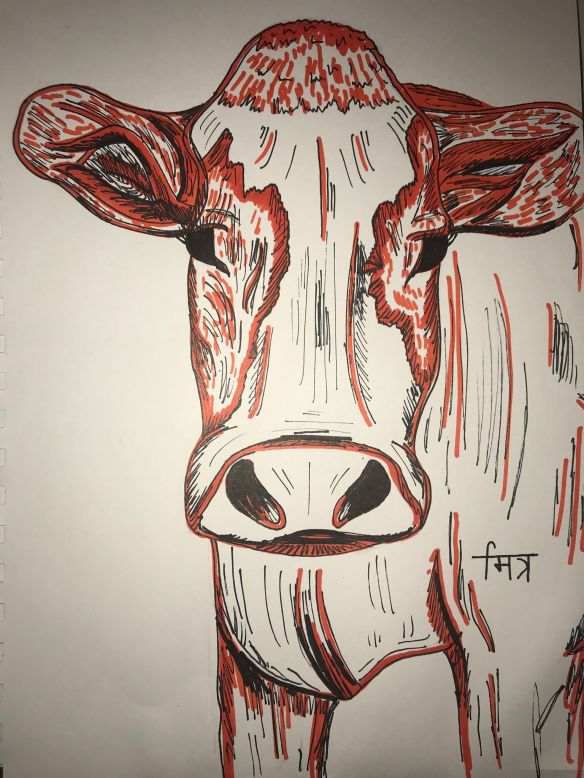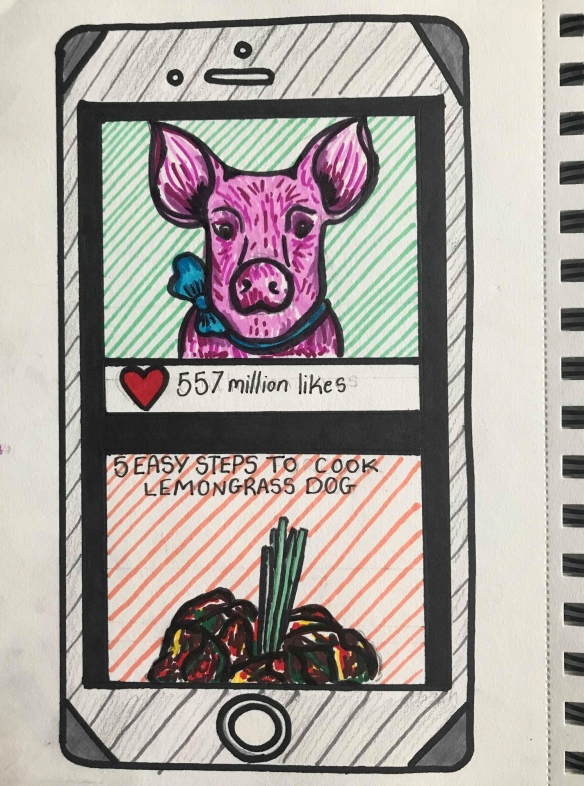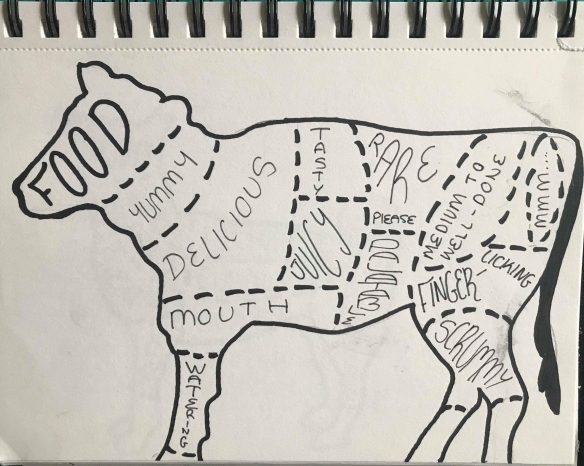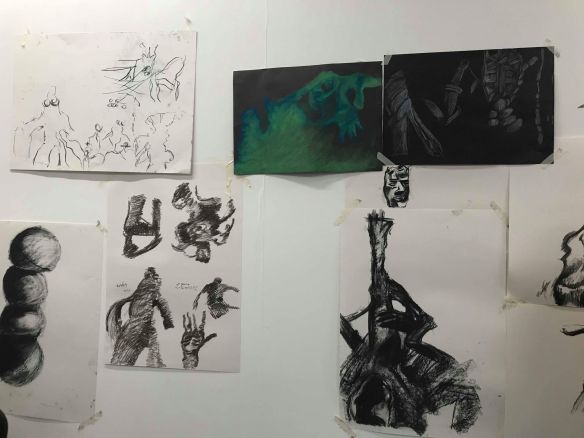
During my week 6, I wanted to go and explore a gallery, to gain inspiration and explore different artists, as well as physically viewing art pieces, as opposed to the usual way of online and through photography. I felt that seeing these pieces in flesh would add another level to their impact upon me.
I had never visited the Tate Modern in London before, and this is why i chose it as my galley to visit for week 6. On first sight the building felt huge and overwhelming, due to its intimidating scale and stature, a well as it consisting of two buildings: the Natalie Bell and the Blavatnik; as well as the turbine hall. The interior of the Tate is monochrome, with the Natalie Bell maintaining black and white, and the Blavatnik white, both with wooden flooring. The interior of the building reflects the contemporary minimalist idea of the white room, to make clear what is art and what is apart of the galleries structure, considering now contemporary art can be anything, as ordinary as a bench.
As I entered the first Tate Modern exhibition I quickly found myself drawn to certain pieces and photographing them, partly for documentation and also out of my own pure interest. I felt that i should carry on this photo and document the pieces that drew my attention the most and explore why this was.
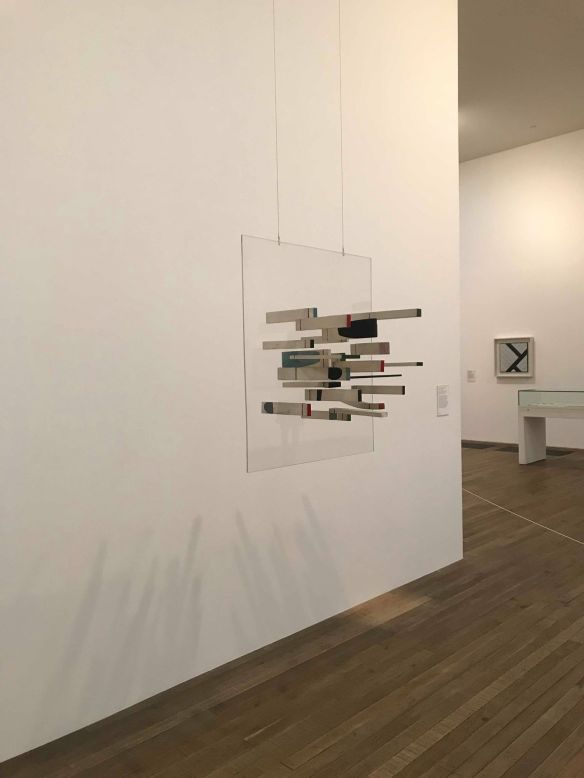
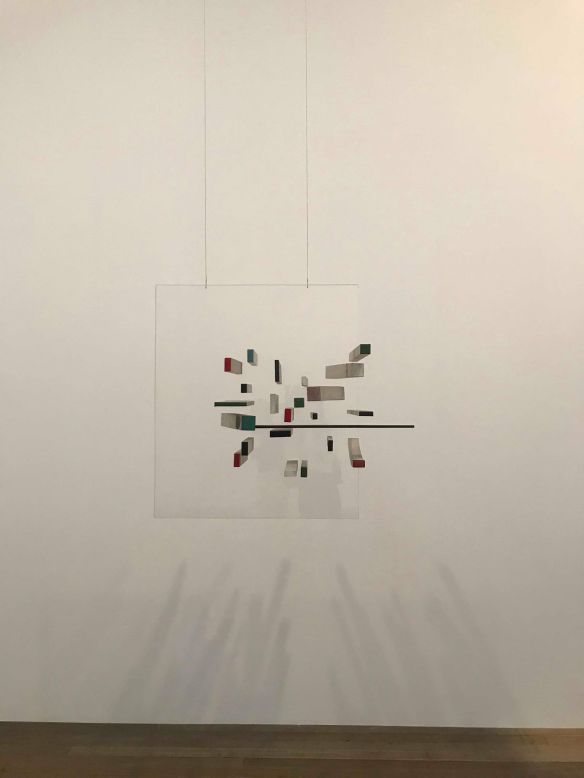
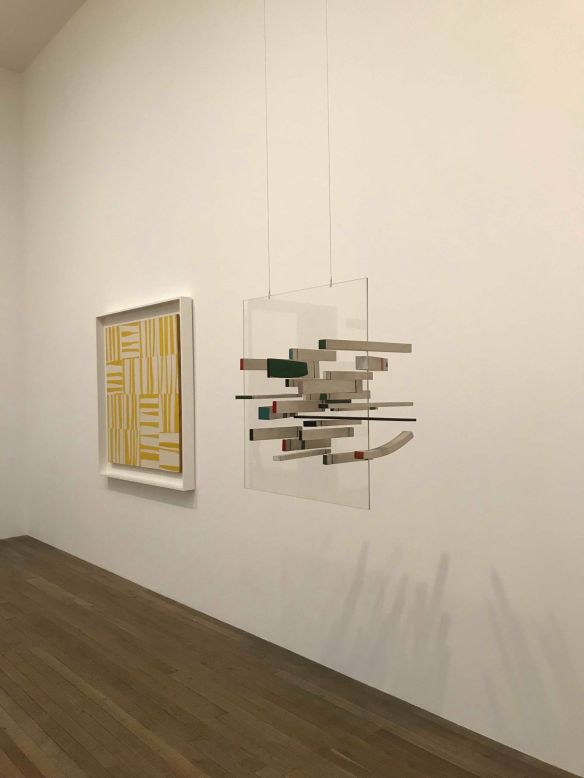
Victor Passmore, ‘Abstract in White, Green, Black, Blue, Grey and Pink’, 1963, Perspex and painted wood
This first piece struck me, because of the way it cast shadow. I found it the most interesting part of the sculpture, as i wondered if it would have been the artist’s intention for it cast a shadow in this way, or if it was a result of the curators positioning. I also found myself interested in it because of its abstract nature, which is unusual for myself since usually i would find myself veering away from the abstract and towards the figurative. I think it was the way the wooden blocks seemed to float in the clear perspex as the sculpture is suspended from the floor, combined with the accents of different colours on the ends of the blocks.
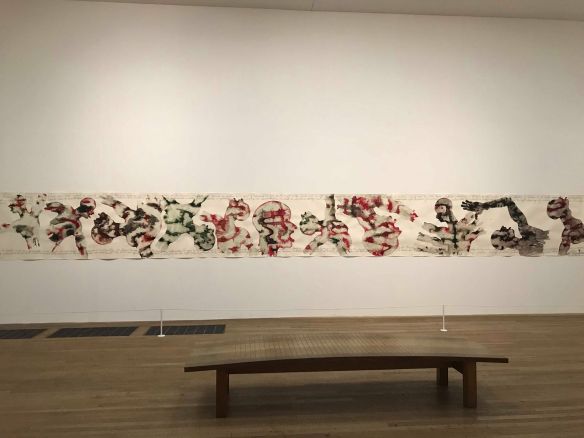
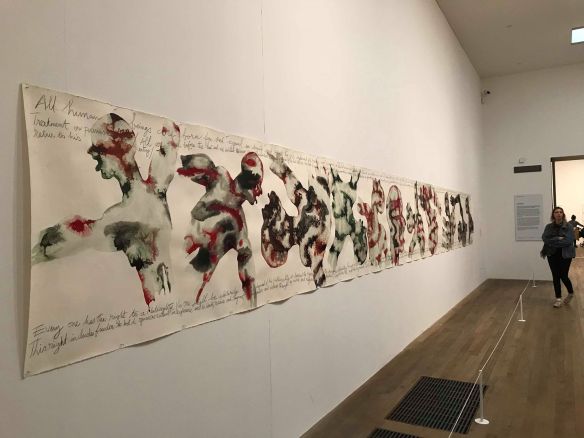
Barthelemy Toguo, ‘Purification’, 2012, Watercolour and graphite on paper
When walking into this room this piece was the first thing you could see from any of the entrances. I was intrigues by its scale mostly, due to its long banner like appearance and the fact in order to read the text on it you would have to walk up and down the piece and i found that this captivated me and i felt like I was actively reacting to it physically. At first I was drawn to the banner because it reminded me of first year, where long stretches of paper were pinned to the wall and as a year we created a piece together. Also I liked the figurative and abstracted qualities combined, with the colours and the (what i thought were dancing) figures. Upon reading the text it took me a while to realise it was regarding human rights and I felt after reading this information, the use of a banner like surface to paint on made sense. As though it was a protest sign.
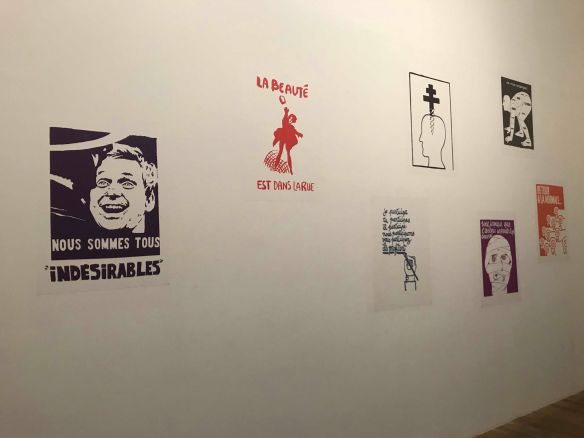
L’Atelier Populaire de Paris, 1968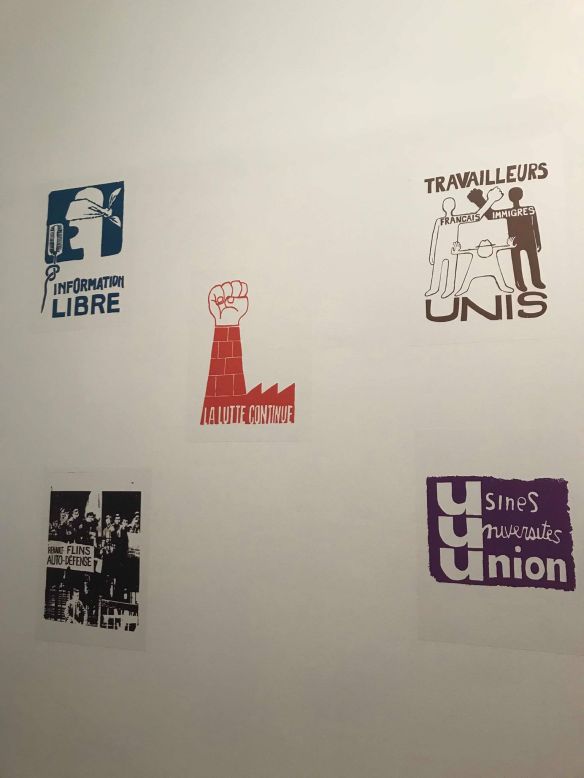

‘Do women have to be naked to get into the Met. Museum’, 1989, and ‘What do these artists have in common?’, 1985

Guerrilla Girls, 1985
I was extremely excited when i came across these pieces of work, since last year i had looked into them and produced my own poster in reaction to their method of printing. It was amazing in person, and it enhanced the thought i’d had previously that seeing work in the flesh adds another level to the experience of viewing them. I found it interesting that the L’Atelier populaire’s work were in their original form as posters stuck to the wall whereas the Guerrilla Girls’ work was framed, and this highlighted the fact that L’Atelier populaire’s work weren’t made for galleries whereas the Guerrilla Girls’ work were, and this hadn’t occurred, and probably wouldn’t have, to me, before viewing them physically.

Roy Lichtenstein, ‘Whaam!’, 1963, Acrylic oaint and oil paint on canvas
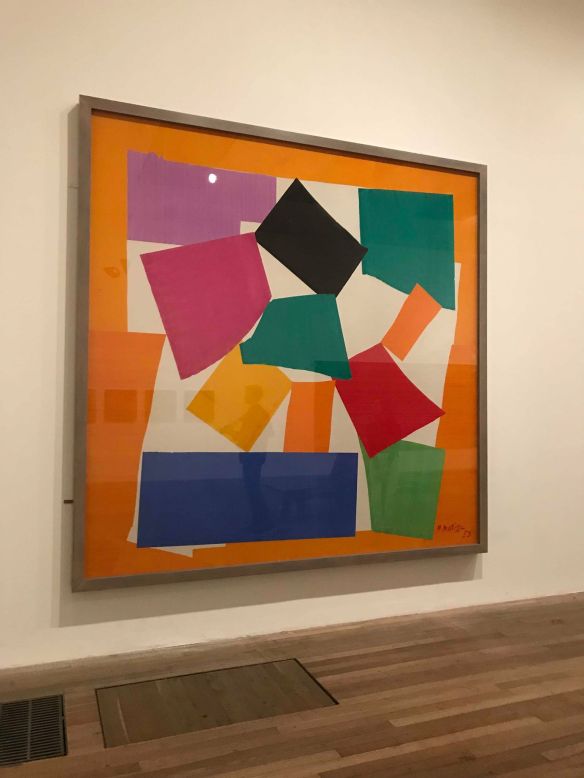
Henri Matisse, ‘The Snail’, 1953, Gouache on paper, cut and pasted on paper mounted on canvas
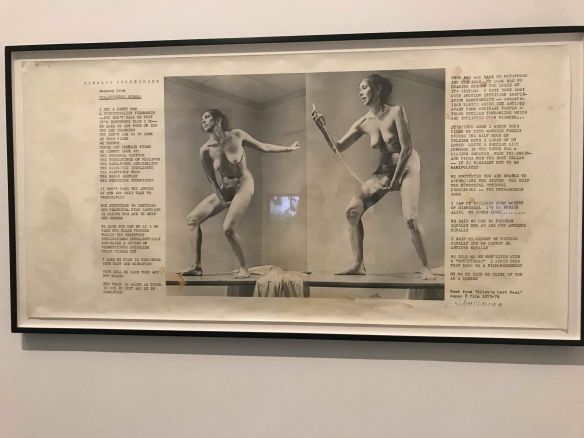
Carolee Shneeman, ‘Interior Scroll’, Beet juice, urine and coffee on screen print on paper
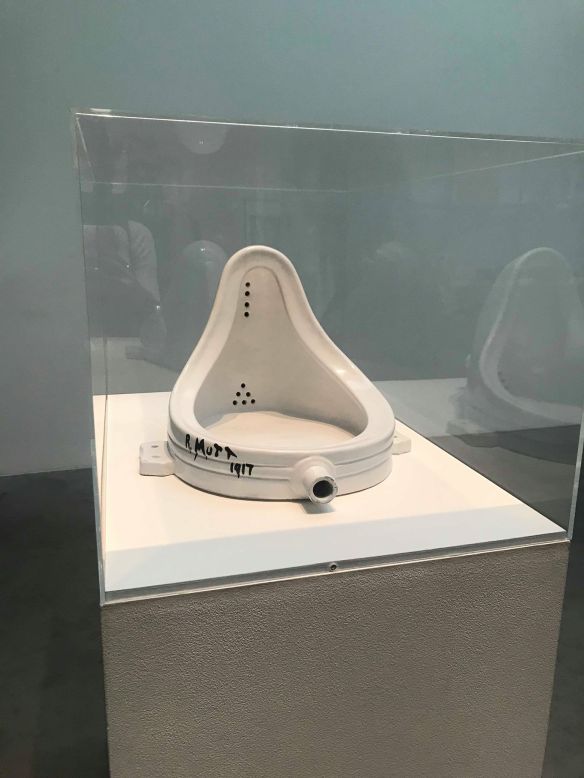
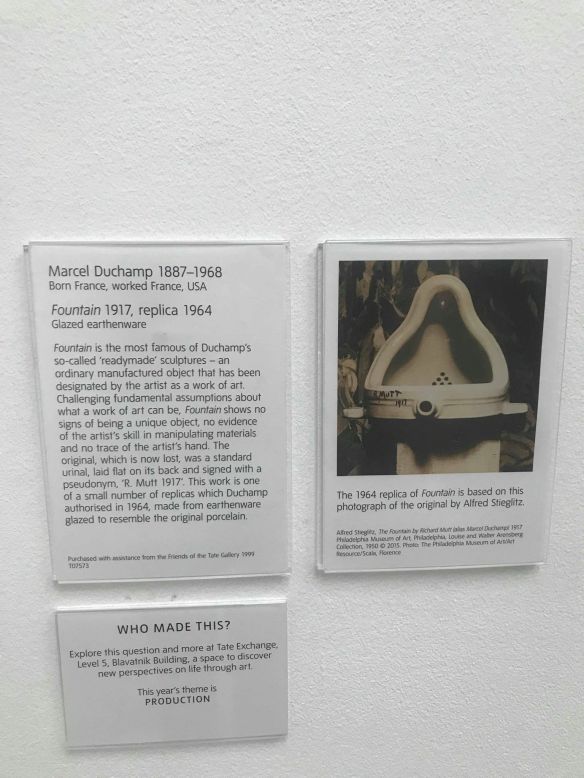
Furthermore seeing these pieces in flesh, which I have studied and drawn from over many years, made me realise how little a photo can project and that seeing pieces physically creates a far more engaging experience.

Jenny Holzer ‘Truisms’

Jenny Holzer, ‘Floor 2015’, Four-sided sign with light emitting diodes

Jenny Holzer, ‘Laments’
The Jenny Holzer exhibition, was one that I found the most interesting. The thing that really stood out for me was the text. As i study both art and literature, i love to see it combined, and so these pieces were inspirational to me in how i can combine my courses. I found her different mediums really interesting from posters, to marble benches, and to LED pieces, that all together contained or presented meaningful and interesting text. My favourite piece from her show was the ‘Blue purple tilt’, due to the way the words travelled up the pieces as though they were travelling out when reaching the top. As well as the neon nature of the light adding another interesting quality.
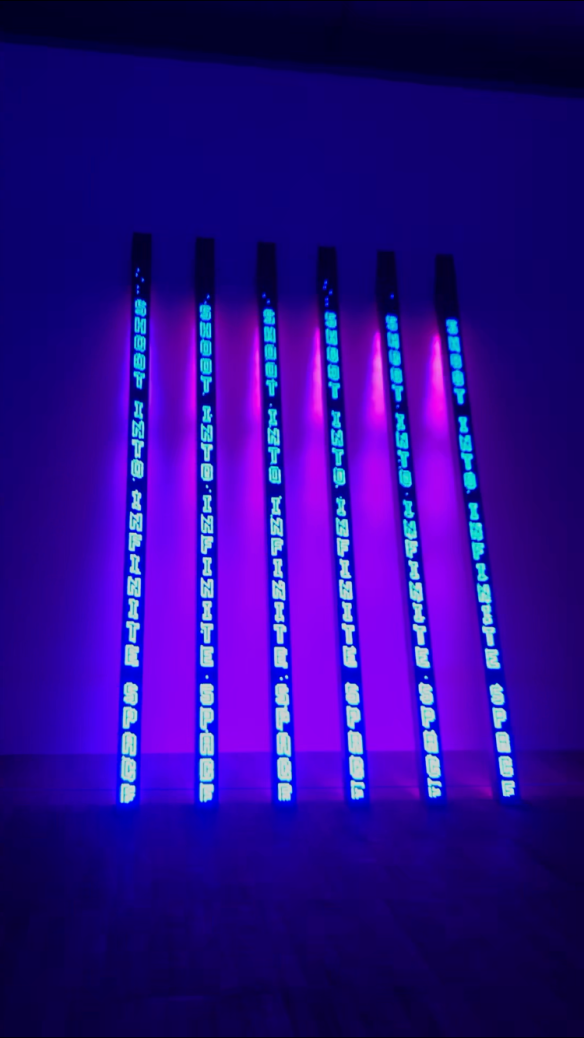
Jenny Holzer, ‘Blue Purple Tilt’, 2007, 6 light emitting diode columns
Overall following my trip to the Tate Modern Museum I feel I have been inspired to visit more exhibitions, as i have realised how important and what a difference it makes to experience pieces in person, when possible. Also i want to explore more work by Jenny Holzer, as to how she uses texts to create a universal message for people who may not enjoy art, but at least can still read.
